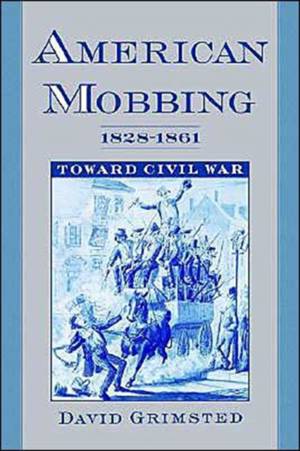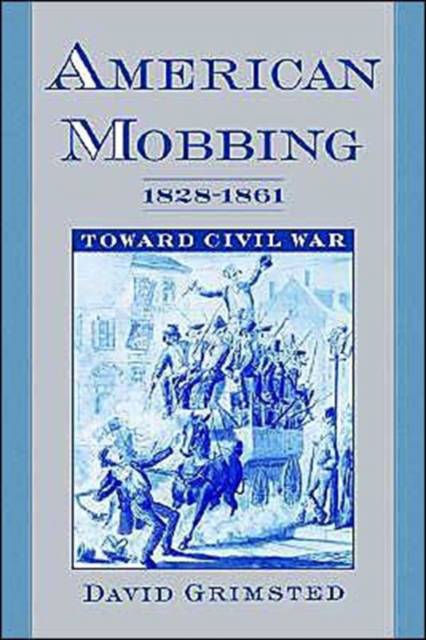
- Afhalen na 1 uur in een winkel met voorraad
- Gratis thuislevering in België vanaf € 30
- Ruim aanbod met 7 miljoen producten
- Afhalen na 1 uur in een winkel met voorraad
- Gratis thuislevering in België vanaf € 30
- Ruim aanbod met 7 miljoen producten
Zoeken
€ 449,45
+ 898 punten
Uitvoering
Omschrijving
American Mobbing, 1828-1861: Toward Civil War is a comprehensive history of mob violence related to sectional issues in antebellum America. David Grimsted argues that, though the issue of slavery provoked riots in both the North and the South, the riots produced two different reactions from authorities. In the South, riots against suspected abolitionists and slave insurrectionists were widely tolerated as a means of quelling anti-slavery sentiment. In the North, both pro-slavery riots attacking abolitionists and anti-slavery riots in support of fugitive slaves provoked reluctant but often effective riot suppression. Hundreds died in riots in both regions, but in the North, most deaths were caused by authorities, while in the South more than 90 percent of deaths were caused by the mobs themselves.
These two divergent systems of violence led to two distinct public responses. In the South, widespread rioting quelled public and private questioning of slavery; in the North, the milder, more controlled riots generally encouraged sympathy for the anti-slavery movement. Grimsted demonstrates that in these two distinct reactions to mob violence, we can see major origins of the social split that infiltrated politics and political rioting and that ultimately led to the Civil War.
These two divergent systems of violence led to two distinct public responses. In the South, widespread rioting quelled public and private questioning of slavery; in the North, the milder, more controlled riots generally encouraged sympathy for the anti-slavery movement. Grimsted demonstrates that in these two distinct reactions to mob violence, we can see major origins of the social split that infiltrated politics and political rioting and that ultimately led to the Civil War.
Specificaties
Betrokkenen
- Auteur(s):
- Uitgeverij:
Inhoud
- Aantal bladzijden:
- 392
- Taal:
- Engels
Eigenschappen
- Productcode (EAN):
- 9780195117073
- Verschijningsdatum:
- 21/05/1998
- Uitvoering:
- Hardcover
- Formaat:
- Genaaid
- Afmetingen:
- 165 mm x 242 mm
- Gewicht:
- 698 g

Alleen bij Standaard Boekhandel
+ 898 punten op je klantenkaart van Standaard Boekhandel
Beoordelingen
We publiceren alleen reviews die voldoen aan de voorwaarden voor reviews. Bekijk onze voorwaarden voor reviews.











